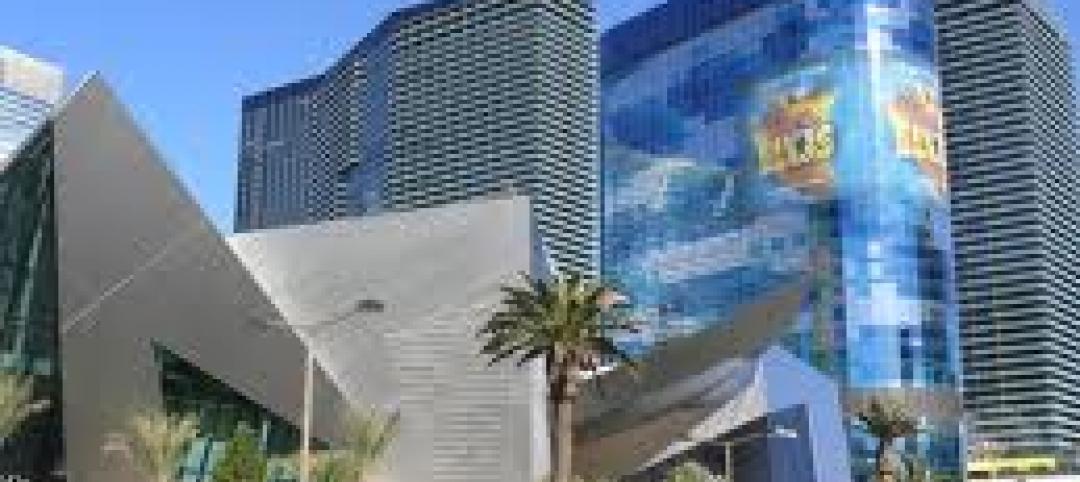 |
| Conference room at the LEED Platinum Great River Energy building in Maple Grove, Minn. Note the underfloor air diffusers in the floor and high windows for daylighting. |
Summary
Sustainable building trends are gaining steam, even in the current economic downturn. More than five billion square feet of commercial space has either been certified by the U.S. Green Building Council under its Leadership in Energy and Environmental Design program or is registered with LEED. It is projected that the green building market's dollar value could more than double by 2013, to as much as $140 billion.
This interest in sustainability is sparking technological innovation, too, as Building Teams and manufacturers work together to make systems that use resources more efficiently. This is evident in the steadily growing number of sustainable mechanical, electrical, and plumbing (MEP) technologies—notably displacement ventilation, power metering and monitoring, integrated daylighting and dimming systems, and hands-free, low-flow plumbing fixtures. Take this free AIA/CEU course from Building Design+Construction.
What you will learn
After reading this article, you should be able to:
* List mechanical, electrical, and plumbing (MEP) system approaches that offer savings in energy and resources.
* Describe why buildings using underfloor air distribution (UFAD) must be different from those employing standard ducted systems.
* Discuss how power monitoring and metering support green building.
* Explain how integrated daylighting-and-dimming systems work.
Take this free AIA course at:
http://www.bdcuniversity.com/mep-technologies-eco-effective-buildings?courseid=1732 (one-time registration required)
Related Stories
| Apr 23, 2012
Vegas’ CityCenter called financial ‘black hole’
Two and a half years ago, stockholders filed six lawsuits after the stock price fell from $99.75 on Oct. 9, 2007, to $1.89 on March 5, 2009. Bondholders sued over similar steep losses.
| Apr 23, 2012
Innovative engineering behind BIG’s Vancouver Tower
Buro Happold’s structural design supports the top-heavy, complex building in a high seismic zone; engineers are using BIM technology to design a concrete structure with post-tensioned walls.
| Apr 23, 2012
Thornton Tomasetti project wins AISC Merit Award
Thornton Tomasetti provided structural design services through construction administration to architect HOK for the 1.6-million-sf tower and tiara structure, which comprises 15 steel tube arches spanning approximately 158 feet horizontally and 130 feet vertically from the top of the main building roof.
| Apr 19, 2012
HBD Construction names Steven Meeks vice president
Meeks will provide expertise for the company in its many diverse areas of construction projects including health care, senior living, education and retail.
| Apr 17, 2012
Princeton Review releases “Guide to 322 Green Colleges”
The guide profiles 322 institutions of higher education in the U.S. and Canada that demonstrate notable commitments to sustainability in their academic offerings, campus infrastructure, activities and career preparation.
| Apr 17, 2012
FMI report examines federal construction trends
Given the rapid transformations occurring in the federal construction sector, FMI examines the key forces accelerating these changes, as well as their effect on the industry.
| Apr 16, 2012
University of Michigan study seeks to create efficient building design
The result, the researchers say, could be technologies capable of cutting the carbon footprint created by the huge power demands buildings place on the nation’s electrical grid.
| Apr 16, 2012
UNT lab designed to study green energy technologies completed
Lab to test energy technologies and systems in order to achieve a net-zero consumption of energy.
| Apr 16, 2012
Batson-Cook breaks ground on senior living center in Brunswick, Ga.
Marks the third Benton House project constructed by Batson-Cook.
| Apr 13, 2012
Best Commercial Modular Buildings Recognized
Judges scored building entries on a number of criteria including architectural excellence, technical innovation, cost effectiveness, energy efficiency, and calendar days to complete, while marketing pieces were judged on strategy, implementation, and quantifiable results. Read More















